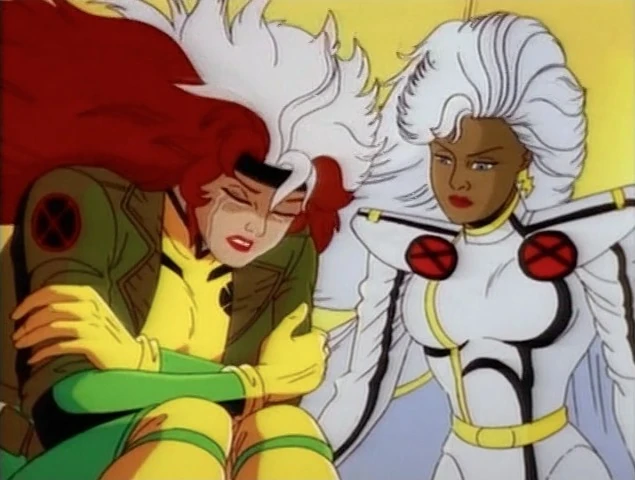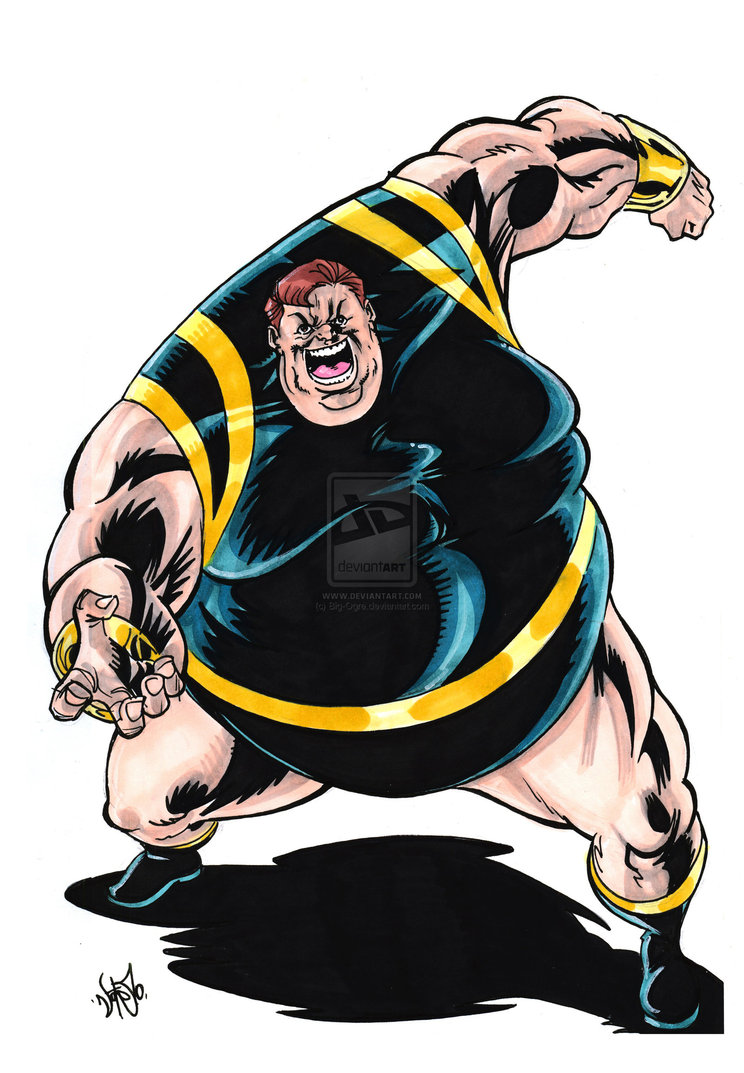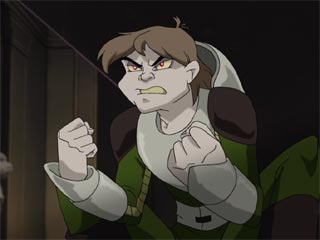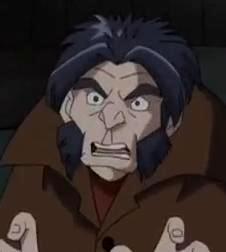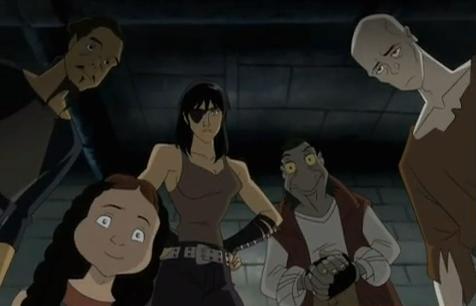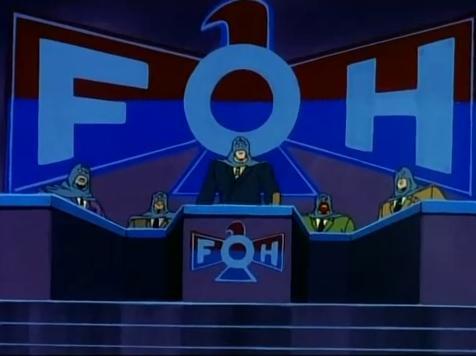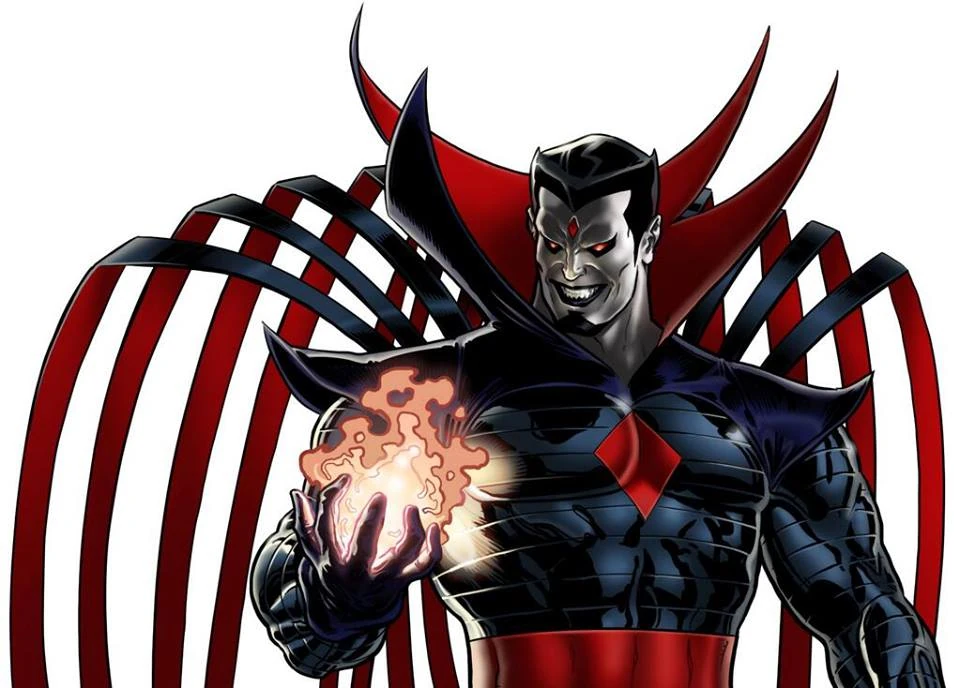Recently, I found a number of posts dealing with a topic I have addressed on my own blog. Apparently yours truly is not the only one to notice and take umbrage with the current fascination for creating so-called “strong female characters.” There have been a couple of articles on other sites dealing with the subject. I have read them and they have gotten the gears in this cranium turning, which lead me to today’s subject: the X-Man Rogue.
First off we will go down the list of Rogue’s abilities. Those familiar with her history in the comics and television will have to bear with me, because I am going to rehash some old storylines to keep everyone in the loop.
The Marvel newcomer who is not entering the multi-verse via the poisoned comics will find Rogue in the X-Men films. This version of Rogue is close but not quite the same as the one found in older comics and cartoons. There is no slight intended when I say that the film portrayal of the character is actually a poorer presentation than the original. Anna Paquin does a good job as Rogue; it is the writers and director(s) of the X-Men films who have mishandled the character.
Anyway, if you “met” Rogue in these films, then you know that her mutant ability is to absorb the memories, talents, and/or mutant powers of anyone with whom she comes into skin contact. You also think she got that white streak in her hair after Magneto force-fed his abilities to her before the final battle in the first movie, but she had that from the moment she appeared in the comics. (I do not like how they gave it to her in the films; it takes away from her character – in my ‘umble opinion.)
I have stated many times that I do not like the X-Men films, so I am going to stop talking about them here and go straight to Rogue’s comic book and cartoon histories. Similar to the films, Rogue’s mutant power manifested when she and her boyfriend, Cody, were having their first kiss. Rogue was thirteen at the time and so she was more than a little frightened when Cody suddenly passed out mid-smooch.
Rejected by her family for being a mutant, Rogue ran away from home, afraid to make skin contact of any kind with anyone. Mystique, in a guise other than her real blue-skinned, red-haired form, found Rogue and recruited her into her latest cabal of mutant trouble makers. She practically adopted Rogue as her own daughter….
…But she treated her as a secret weapon, using Rogue to her advantage in fights with the X-Men. Rogue was completely loyal to Mystique because she had taken her in and given her direction when no one else had and when no one else would give her the time of day. She rarely balked when told to use her absorption abilities on an X-Man, security guard, or some other person Mystique wanted knocked out or who had information she desired.
The one instance I know of in the comics where Rogue refused to use her power was when Mystique told her to absorb Angel’s abilities. Rogue was afraid that she would grow wings like his, so she did not want to touch him. As you may know from watching the films, readers, the powers Rogue absorbs eventually fade away. The memories and skills she “downloads” along with them remain like “ghost files” in her head, but they do not (usually) bother her after a while. Prior to 2015, the writers made it possible for Rogue to “recall” individual powers and abilities she had previously stolen from people, something I consider cheating. But in the case I mention above, Rogue did not have that power and she feared she would be stuck with Angel’s wings permanently if she touched him, so Mystique did not get her way in that episode.
Eventually, Rogue’s servitude to Mystique led her into a fight with Carol Danvers. At the time Danvers’ codename was still Ms. Marvel, and so her uniform consisted of a black swimsuit with a yellow lightning bolt emblazed on the front. Because her suit had no sleeves or pants, she was a perfect target for Rogue’s absorption abilities.
Thinking Danvers would be easy enough to overcome, Rogue grabbed hold of her and started draining her powers.
But unlike Rogue’s other opponents, Danvers did not immediately pass out. Since her powers come from Kree DNA that was somehow bonded to her body, Danvers possesses almost as much physical strength as Ben Grimm. She also has the ability to fire bolts of energy from her hands, sub-supersonic flight, indestructability, a ferocious Kree temper, and a precognitive “seventh sense” that allows her to see her opponent’s next move before it happens. I have never seen this last power demonstrated – and the number of times that Danvers has been smacked, thrown around, or otherwise hit makes me think she does not actually have this power.
Anyway, the Kree DNA kept Danvers awake longer than any of the other people Rogue had touched. It also fueled her anger and she started fighting back. Frightened by Danvers’ unexpected reaction to her powers, Rogue tried to let the woman go and make good her escape.
But Danvers would not let Rogue go. The two struggled for an eternity of minutes before they crashlanded. Once that happened Rogue discovered that, not only was she physically unharmed along with Danvers, but the other woman was out cold at last beside her in the dirt.
After this, Rogue found she had absorbed Danvers’ capabilities of flight, indestructibiliy, and superhuman strength. These powers did not fade over the next two or three days, as all her other “borrowed” powers had, and it looked like they were hers for keeps.
But she soon discovered that these fantastic powers came with a terrible price. Her prolonged contact with Danvers’ meant that she didn’t just have the woman’s memories and powers; Danvers’ psyche was stuck in Rogue’s mind and body at the same time Danvers’ own body remained in a hospital in a coma. Her personality – almost her entire being – was seemingly just as much Rogue’s property now as her powers were.
This unintended arrangement left Ms. Marvel less than pleased, and Rogue soon found she didn’t like it either. If Ms. Marvel really made an effort at it, she could commandeer Rogue’s body. Rogue would black out in one place and wake up in another, sometimes wearing Danvers’ suit or accoutrements and surrounded by the things Danvers enjoyed. This was more than a little frightening and upsetting for her, and it brought her to the realization that she had practically committed murder by absorbing Danvers’ mind into herself.
As Rogue’s guilt grew, she asked her “Mama” to find a way to make Danvers go away or to transfer her out of her body. But Mystique did not know how to do that and, what is more, she did not want to do that. She might have thought that Rogue could adapt to having Danvers in her mind or something like that, too, because she wanted Rogue to go on using her powers – despite the fact that her “daughter” was sharing space with another woman who could take control of Rogue’s body at the most unexpected or unwelcome moments.
This led Rogue to run away again. Knowing the X-Men as well as she did, she went to them for help in removing Danvers’ psyche.
Her reception was not a warm one. Danvers had worked with the X-Men on more than one mission, so they considered her a friend (for what reason, I have no idea). Wolverine was especially upset, since he and Danvers were particularly close. (Again, I have no idea why they were such good friends. Danvers should have driven Wolvie half crazy ninety percent of the time, but this did not happen, probably because the writers were working overtime to make their “uber woman” more acceptable to their audience through her acceptance by the other characters in the Marvel Universe.) Aside from the Professor, no one on the team saw anything likeable about Rogue, and she was a virtual outcast in the team she had sought out for help, as well as to begin to make amends for her past misdeeds.
But Rogue did finally earn full acceptance by the X-Men, becoming one of their most valued members and friends. Wolverine ultimately thawed to her as well, to the point that he became her informal protector and mentor during her early days on the team. She has since become one of the most recognizable and loved characters in Marvel Comics, as evidenced by the fact that yours truly is a fan of her.
What does Rogue have to do with the push for feminization in fiction? For a long time in the comics and cartoons, Rogue’s most apparent abilities were the ones which she had stolen from Danvers, to the point that I, as a young viewer, thought they were her actual mutant powers. Throughout the 1990s comics and cartoons, Rogue would punch or throw the villains into walls, knock down buildings, or hold up heavy pieces of buildings during different battles.
This meant that she was able to shake off resultant punishment in a battle as well. While fighting several Sentinels in the 1990s pilot, one of the robots hit Rogue in the back with his fist, sending her smack into the floor. Lifting herself up on her hands and knees at the bottom of the crater, Rogue shot the robot a smile and chided it for its bad behavior. Then she flew up, grabbed it under the arm, and threw it to the floor, where it promptly flew to pieces.
That is a pretty impressive display of strength, you have to admit. And I was young enough that such displays excited me. I happily rooted for Rogue whenever she pulled off an amazing feat of strength like that. I was a young, impressionable child who loved superheroes. I wanted to be strong when I grew up, strong enough to fight evil the way that I saw my heroes fighting it every Saturday morning. It is completely normal.
I do not know when it happened, but after a while Rogue’s apparent superpowers stopped being the main reason for my interest in her. It might have been the episode where she and Nightcrawler learned they were related through Mystique, or it might have been a different show entirely. All I know is that, after a while, I liked Rogue for Rogue and not for her superpowers.
Again, you ask, what does all this have to do with the strong woman trope we are having forced on us in fiction today? Some people have said that the feats of strength Rogue pulled off in the ‘90s might have been overdone.
This is entirely possible, even probable, but I would like it if these critics would keep a few things about her in mind. Some of the reasons Rogue’s fighting style in the ‘90s (and before and after in the comics) may have looked improbable were because Rogue herself did not actually know how to use her strength, or she was relying on Danvers’ understanding of how to use increased strength during a battle.
And, because she had Danvers’ indestructability, Rogue might have thrown herself into certain situations for no other reason than to protect a teammate who would squish far more easily than she would. These are possibilities I would suggest for any maneuvers the writers had her perform which people find hard to believe. I think they should remember that, from Rogue’s point of view, these maneuvers might have seemed totally normal or reasonable to her, given what she knew of using her super strength. Rogue did not have the best education, which we’ll cover in more depth below, and so she did not and does not know as much about physics as readers/viewers and others do.
The other thing viewers and readers should keep in mind when they watch Rogue fight is her absorbing ability. If she suddenly acquires the strength of the Unstoppable Juggernaut and begins throwing him around, it can look a little silly to us. Here is a girl who barely comes up to Juggernaut’s hip whirling him around over her head like a ragdoll. Under normal circumstances, it is totally implausible and stupid looking.
But Rogue is not normal, especially when she absorbs the powers of others. If she absorbs Juggernaut’s power, then she has his strength. Whether she has it in proportion to her size, weight, and height does not matter; you could drop a building on her while she has Juggernaut’s powers and she won’t even get a bloddy nose, for the simple reason that he would not get a bloody nose. Unfair? Maybe, but this is fantasy we are talking about here. We enjoy it precisely because it allows us to imagine stuff we cannot actually do.
The other thing to remember is that Rogue cannot just activate the powers she steals willy-nilly. She has to access the memories of the people who actually own these powers so she can avoid blowing up the countryside or flooding Manhattan. If she wants to use Juggernaut’s own strength against him, she will rely on his memories – muscle and conscious/subconscious – to make the best possible use of his powers. Juggernaut’s fighting style is not Rogue’s, nor should it be. But when she immerses herself, however shallowly she does it, in his memories this means that we will see her fighting the way that he does. It looks ridiculous, but when you keep this aspect of her powers in mind it becomes understandable and allowable.
Now this does NOT mean the writers should not be held to a high standard when they portray her pulling off these feats, but it does mean that it behooves us, as the audience, to remember the McGuffin that allows Rogue to survive these battles and/or perfom these stunts. It is a balance between the writers knowing their craft and the audience accepting the parameters of the story they are telling. Writers who abuse or talk down to their audience must rightly be called out for their arrogance. But an audience that will accept a good story with thousands of impossible McGuffins scattered throughout it should not throw stones in glass houses. That is my opinion, anyway.
Now we will discuss why Rogue is not an “SFC” or “Strong Female Character” in the vein that Carol Danvers, Thorette, and Thundra are.
Long story short, Rogue does not qualify as the modern strong woman. First, her character design has fluctuated since the ‘90s and she no longer has the muscle structure of Ms. Marvel. Rogue is nothing like Carol Danvers, Thundra, or Thorette. These female characters are cardboard cutouts designed to appease and appeal to the Femi-Nazis, who are forever unhappy and whose hunger for the destruction of Western culture is utterly insatiable. It may appear from her 1990s debut – and, for all I know, some of Marvel’s newest stories – that Rogue qualifies as a “SFC,” but the fact is that Rogue is not a cardboard cutout, nor is she a strong woman in the sense that she is faster, smarter, and stronger than the guys.
One of the first people to admit that she is not smarter than almost anyone you could name would be Rogue herself. She is capable of outwitting an opponent and she is not stupid, but she is not a scholar, or a mechanic, or a super genius, or any of the other “SFC” tropes. What is more, she does not – or did not – pretend to be any of the above when I watched her on television and knew her in my limited way in the comics.
Most of the knowledge that Rogue possesses of higher mathematics, scholarly enterprises, etc., is knowledge that she stole from others. In the comics, Rogue ran away from home when she was thirteen. She spent years on the road after this, and a few more years under Mystique’s “guidance” before joining the X-Men. I do not think there was a lot of time in there for regular schooling, do you, readers? No, there was not. So this means her formal education ended, practically speaking, after she left home.
Now Danvers went through all the schooling necessary to become an Air Force pilot and Jane Foster – who used to be a perfectly respectable character – had to go through extensive schooling and training to become a nurse. We are just supposed to accept that Thundra, being from an alternate universe where women are the dominant sex (ignore the barfing sounds on the other side of the screen, please, readers) is naturally smarter than any man on this Earth or her own – though it is funny how she never shows it.
None of the above applies to Rogue. Everything she has learned since she discovered her powers has been taught to her by circumstance and by the consequences of her choices; her smarts were earned in the school of hard knocks, not in a brick and mortar building. Danvers, for all her supposed superiority to men, learns nothing from the battles she takes a part in. The evidence of this is that she is one of the few Marvel characters with no ability to resist telepathic control for even a fraction of a second. Rogue has had to learn to be tough to survive; Danvers survives through the writers’ stubborn intent to keep her alive.
In moments of downtime in the 1990s series, Rogue also had a generally cheerful demeanor. She smiled, laughed, and joked regularly; this showed that she was someone who genuinely loved life, despite the numerous punches she had been dealt by it.
In contrast, Danvers’ sense of humor is thinner than cellophane plastic. When she teases or jokes, it sounds tinny and unreal; when she smiles, it does not soften her features. It makes her look like she is stretching her face to the breaking point.
Something else that differentiates Rogue from the “SFC” trope is that she is vulnerable. I read a book some time ago by Fr. Dwight Longenecker called The Romance of Religion. One of the interesting things he mentions in the book is that hero(es) of stories tend to have a fault or a wound that they must bear as they do their duty or carry on their quest.
Looking out over most of fiction – and especially Marvel – I have to think he is on to something here. From Spider-Man to T’Challa, from Captain America to Punisher, from Hawkeye to Ben Grimm, most of Marvel’s characters have some sort of emotional injury that they carry with them wherever they go. And ninety-nine point nine percent of them have character flaws they have to either overcome or continually wrestle to control – although by now, that fact is out the window. In Marvel’s – and our – brave new world, flaws are to be embraced, not resisted. They are natural to us while self-control is just an artificial restraint society uses to keep us down. (Yes, I am being sarcastic, readers.)
In the original stories, Rogue’s great emotional weakness was her inability to make skin contact with another human being – or any other being, for that matter. She had to wear longsleeved shirts and long pants, as well as gloves, all the time. She could not pat Wolverine on the hand with her own bare hand. She could not let someone brush up against her arms if her shirt, jacket, or suit somehow lost its sleeves – and she could never, ever kiss a man for more than a few seconds. And even the briefest of kisses would be dangerous for him.
This last was particularly painful for her because, during the ‘90s, Gambit was actively courting her. Oh, he would flirt with plenty of other girls during the series, but the one he consistently went after with every ounce of charm he could muster was Rogue.
Usually, Rogue would flirt back, but that was as far as she could and would let it go. Aside from two different times that I know of where Gambit kissed her, Rogue had to put her glove over his mouth and kiss that to show her feelings for him. On more than one occasion, her frustration with her inability to safely touch someone, anyone, would drive her to anger and/or cause her to make an avoidable mistake.
This was Rogue’s greatest vulnerability, but she had others. When captured along with the other X-Men by Mr. Sinister and his Nasty Boyz in the ‘90s TV series, Rogue admitted to Gambit that she was scared. Sinister had found a way to block mutant powers in this episode, which meant that both Rogue’s innate absorption abillities and the powers she had taken from Danvers were suppressed. “I don’t know how to fight these guys without my powers,” she admitted to Gambit.
Now, readers, can any of you name one single time that Carol Danvers has admitted that she is afraid of something/someone? I cannot. To the best of my knowledge, Danvers has never once shown fear. She might – MIGHT – show concern, but most of the time when she is captured or in a situation that looks grim, she just becomes angry. Thorette seems to be going the same route, while Thundra has always had a demonstrable temper and no real sense of, or respect for, fear.
Rogue certainly has a temper, but in this episode, anger was the furthest thing from her mind. Her primary emotion was fear because she did not know how to fight without using her powers. What “SFC” shows or admits to fear? I do not know of any, but if you can name me one, readers, I will look into her.
In the series that followed the ‘90s X-Men, the writers changed Rogue’s appearance. They dropped Ms. Marvel from the series’ storyline and left Rogue to rely on her absorption ability alone. They also gave her and the rest of the teenage X-Men close combat and weapons’ training.
While this was a plus for Rogue, leaving her a way to protect herself if she could not somehow bring her mutant powers to bear, in my opinion the writers did make one mistake with her characterization in this series: Evolution showed Rogue as an anti-social teenage girl who was into Gothic makeup and clothing. Forget that her makeup would not have lasted five seconds in battle (yet it somehow lasted the entire series), the change in her demeanor was not something I think was really necessary. Rogue did well in the series but I did – and do – miss the cheerful zest for life she exhibited in the ‘90s.
Personally, I suspect the writers gave Rogue more angst because they thought it would sell. It must have, because the series lasted four seasons. Her tendency to brood and lose her temper did not detract from her willingness to help others, which was good, and this demeanor did give her a chance to connect with Wolverine as a father figure. While this last was especially nice, I still miss her earliler deportment a lot. If Marvel ever rights itself and starts telling good stories again, I hope they give Rogue back the joi de vive she had in the ‘90s.
One other good thing about Rogue’s appearance in Evolution was her shorter hair. It is a well known fact that sexual predators target women with long hair because then they can grab hold of it and use that hold to force the woman to go where they wish. Such a hold is painful – if you do not believe me, readers, try it on yourself. (Trust me, it hurts.)
One of the strange things that writers for modern films and stories – including comics – keep doing is they are sending their heroines into combat with long hair. This is silly, as it can be a weakness; the heroine’s hair could catch in a machine and suck her down a hole, or her opponent(s) could grab it and use that hold to keep her still. Your heroine may look great with long hair, but remember, readers and writers, that even Princess Leia’s hair was done up in such a way that a Stormtrooper couldn’t grab it and yank her back. There was also no chance of her long locks getting caught in the Millenium Falcon’s inductors because it was pinned up and out of the way.
Allowing men into combat with beards is no more practical than sending women into a fight with long hair. (Yes, I AM looking at Cap’s beard in Infinity War.) One of the reasons the Romans shaved was so that, when they got into personal combat with an enemy, he would not be able grab the Roman’s beard and hold him immobilized long enough to behead him. Ask the Romans how they know about this.
Now most stories are fantasy, of course, and in some cases you can actually excuse the female characters’ long hair (who is going to be able to get close enough to Storm to grab her hair, I’d like to know?). However, Rogue’s shortened hair is not a problem for me, nor is her more feminine muscle tone.
This is why I do not and cannot see Rogue as the Feminist ideal of female superiority. Rogue is a normal woman with a power that she sees, with justification, as a curse rather than a gift. She has insecurities and fears; she makes mistakes and she is not well-educated outside of life’s hard lessons. Her strength does not come from her superpower or the powers she steals – it comes from her williness to fight evil. It comes from her desire to protect her friends and to make up for her errors in judgement. It comes of her willingness to consistently choose to be a heroine, even when doing so hurts her the most.
This is why she is one of my favorite X-Men and one of my favorite Marvel characters. This is why I cannot consider her a member of the “SFC” club, at least in her previous portrayals in the comics and cartoons. These days I can believe that Marvel would erase her from its canon if the banana brains in charge thought that would get them new subscribers and buyers. If they are going to try and make her the big, strong female character stereotype, they will ruin her as they have ruined all the other characters they are abusing.
But there is nothing I can do to stop them from torturing themselves like this. And at this point, telling them, “Hey, your company is bleeding money all over the place,” appears to be a waste of breath. If they want to bankrupt themselves, then nothing I say or do will stop them. I can only hope that when that happens, someone who loves the characters will buy the company and that they will hire good writers to clean up the mess. And yes, I would volunteer to be one of those writers in a heartbeat.
I hope it does not come to that, but it looks like it might. But if there is one thing Marvel’s myriad heroes have taught me, Rogue included, it’s that even when you get punched in the teeth, it does not mean the battle is over. It just means you got punched in the teeth. That is no reason to give up the fight.
So no, I do not intend to stop fighting. Only dead fish go with the flow, and I do not intend to be a dead fish. There is more than one way to fight, and the best way to fight Marvel’s current hierarchy is to introduce potential new Marvel fans to original Marvel fare.
In the interest of doing that, I recommend that you look up the 1990s X-Men televsion series, readers. Then study up on the characters in it, along with Marvel’s other heroes and heroines. Read between the lines; it is not the battles the characters take part in that are important, or the powers they wield, or the atrocities the current writers are making them commit –
It is who they are as characters that is important. This is what Marvel has decided to forget….
…..So this is what we have to remember and pass on to others.
EXCELSIOR!!!!




